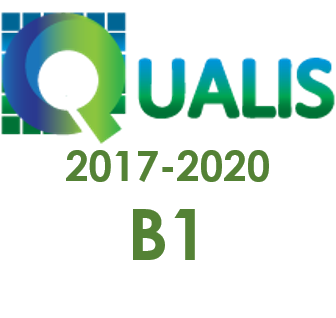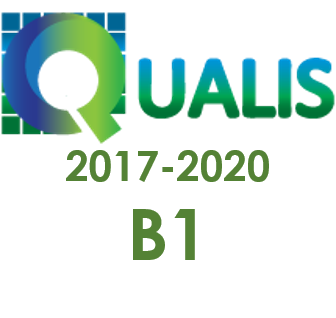The memory of Itarendá resignifying new territorialities
DOI:
https://doi.org/10.22481/odeere.v3i5.3640Keywords:
Itarendá, TerritorialidadesAbstract
The present Report is the result of studies in the discipline Visual Anthropology, taught by Professor Flavio Leonel in the Masters Program in Languages and Knowledge in the Amazon, Federal University of Pará, Campus of Bragança. In view of the theoretical foundation appreciated during the course we intend to discuss the concept of memory presented by Paul Ricoeur, in which the author is based on two questions: what is there? Whose memory is it? We can attribute to these questions the paradigm shift: from the fact that is remembered, to the subject who remembers that fact. In this way, the memory of the Ka'apor can refer to images of the past and reconstitute the present of the new villages created within their Territory. Thus, the report makes a theoretical clipping of key concepts of what was the development of the research, whose theme is A (RE) SIGNIFICANCE OF THE PLACE AND THE NEW TERRITORIALITIES OF THE KA'APOR IN VILLAGES IPU'Y INCOME AND TURIZINHO. In addition, I propose to present the reflections of the researchers Ana Luiza Carvalho, Fernando Tacca, Carlo Severi and Jacques Aumont in the bulge of the concept of image relating to the photographs acquired during experience as teacher of the ka'apor schooling project in the years 2012 and 2013, called Ka'a namõ jumu'e ha katu - Learning from the Forest.
Key words: Resignification, villages, Itarendá.
Downloads
References
AUMONT, Jacques. Do visual ao imaginário. In: A Imagem. Campinas: Papirus, 1993, pp. 58-76.
BARBOSA, Luiz Bueno Horta(org.). O problema indígena no Brasil. Rio de Janeiro: Imprensa Nacional- Brasil. 1947.
FLAVIO, Luiz Carlos. Território e Memória. In: SAQUET, Marcos Aurélio (Org.). Estudos territoriais na ciência geográfica. São Paulo: Expressões. 2013.
GRUPIONI, Luis Donizete Benzi (org.). Formação de professores indígenas: repensando trajetórias. Brasília: Ministério da Educação, Secretaria de Educação Continuada, Alfabetização e diversidade, 2006.
HALBWACHS, Maurice. Memória Coletiva. Tradução de Laurent Léon Schaffter. São Paulo: edições Vértices. 1990.
MAFFESOLI, Michel. O imaginário é uma realidade. Revista FAMECOS, Porto Alegre, 15: 74-82, 2001. https://doi.org/10.15448/1980-3729.2001.15.3123
RICOEUR, Paul. A memória, a história, o esquecimento. Tradução Alain François (et al). Campinas,SP: Editora da Unicamp, 2007.
ROCHA, Ana Luiza Carvalho da. Antropologia das formas sensíveis: entre o visível e o invisível, a floração de símbolos. In: Horizontes Antropológicos, Antropologia Visual, 1(2): 85-92, 1995.
__________. Tecnologias Audiovisuais na Construção de Narrativas Etnográficas: um percurso de investigação. Campos, 4:113-134, 2003. https://doi.org/10.5380/cam.v4i0.1601
SARTRE, Jean paul. O imaginário: psicologia fenomenologica da imaginação. Tradução Duda Machado. São Paulo: Ática, 1996.
SEVERI, Carlo. A palavra emprestada ou como falam as imagens. Revista de Antropologia, São Paulo, USP, 2(52): 459-506, 2009.
TACCA, Fernando de. Rituaes e festas Bororo:a construção da imagem do índio como “selvagem” na Comissão Rondon. Revista de antropologia, SÃO PAULO, USP, 1(45): 187-219, 2002. https://doi.org/10.1590/s0034-77012002000100006
_________. Imagem fotográfica: aparelho, representação e significação. Psicologia & Sociedade, 17 (3): 09-17, 2005. https://doi.org/10.1590/s0102-71822005000300002
_________. O índio na fotografia brasileira: incursões sobre a imagem e o meio. História, Ciências, Saúde – Manguinhos, Rio de Janeiro, 1(18): 191-223, 2011. https://doi.org/10.1590/s0104-59702011000100012
Downloads
Published
How to Cite
Issue
Section
License
Copyright (c) 2021 ODEERE

This work is licensed under a Creative Commons Attribution 4.0 International License.
You are free to:
Share - copy and redistribute the material in any medium or format; Adapt - remix, transform, and build from the material for any purpose, even commercially. This license is acceptable for Free Cultural Works. The licensor cannot revoke these freedoms as long as you follow the terms of the license.
Under the following terms:
Attribution - You must appropriately give credit, provide a link to the license, and indicate if any changes have been made. You may do so in any reasonable way, but not in a way that suggests that you or your use is endorsed by the licensor.
There are no additional restrictions - You cannot apply legal terms or technological measures that legally restrict others to make any use permitted by the license.















